The Flowers of St Francis
8.8 /10 1 Votes
100% Rotten Tomatoes Genre Biography, History Country Italy | 7.6/10 IMDb Duration Language Italian | |||||||||||||||||||||||||||||||||
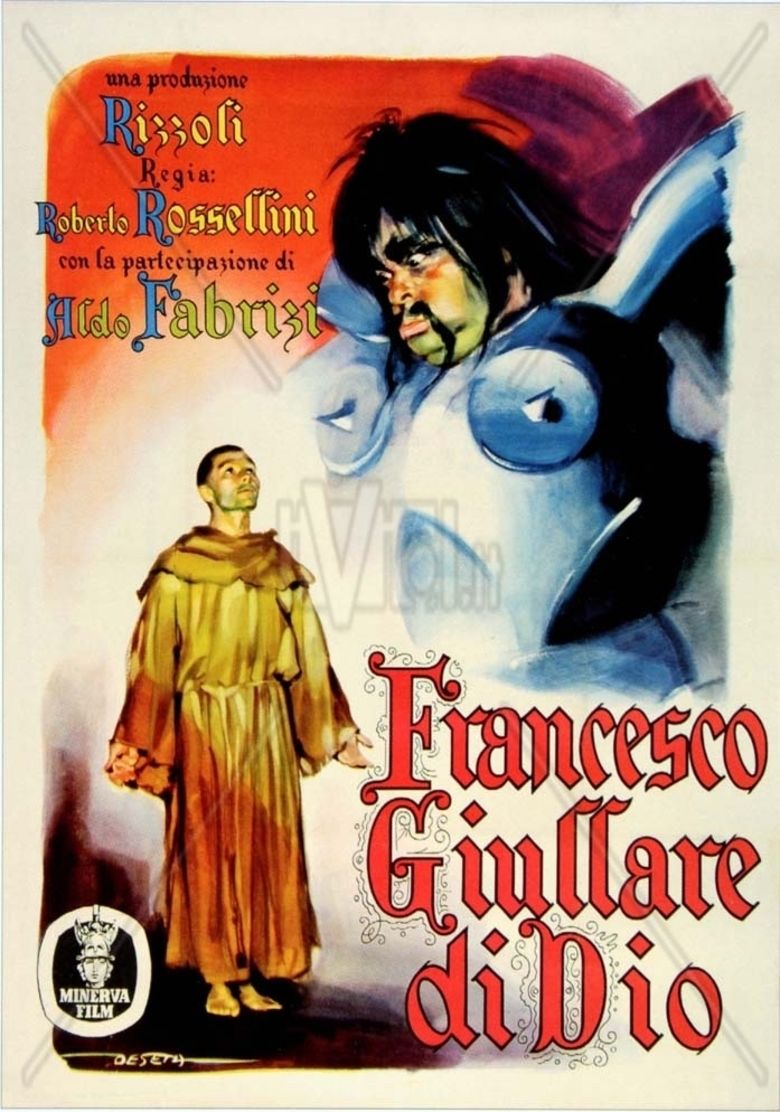 | ||||||||||||||||||||||||||||||||||
Release date 14 December 1950 Writer Federico Fellini (screenplay), Antonio Lisandrini (screenplay), Felix Morlion (screenplay), Roberto Rossellini (screenplay) Cast (Nicolaio, il tiranno di Viterbo), Gianfranco Bellini (Narrator (voice)), Peparuolo (Giovanni il Sempliciotto), Severino Pisacane (Fra' Ginapro (as Fra' Severino Pisacane))Screenplay Roberto Rossellini, Federico Fellini, Brunello Rondi, Sergio Amidei, Felix Morlion, Antonio Lisandrini Similar movies The Last Witch Hunter , Fish Tank , Factory Girl , The Heart is Deceitful Above All Things , At the Edge of the Abyss , Jupiter Ascending | ||||||||||||||||||||||||||||||||||
The flowers of st francis roberto rossellini 1950
The Flowers of St. Francis (in Italian, Francesco, giullare di Dio, or "Francis, God's Jester") is a 1950 film directed by Roberto Rossellini and co-written by Federico Fellini. The film is based on two books, the 14th-century novel Fioretti Di San Francesco Little Flowers of St. Francis and La Vita di Frate Ginepro (The Life of Brother Juniper), both of which relate the life and work of St. Francis and the early Franciscans. I Fioretti is composed of 78 small chapters. The novel as a whole is less biographical and is instead more focused on relating tales of the life of St. Francis and his followers. The movie follows the same premise, though rather than relating all 78 chapters, it focuses instead on nine of them. Each chapter is composed in the style of a parable, and, like parables, contains a moral theme. Every new scene transitions with a chapter marker, a device that directly relates the film to the novel. When the movie initially debuted in America, where the novel was much less known, on October 6, 1952, the chapter markers were removed.
Contents
- The flowers of st francis roberto rossellini 1950
- Chapters
- Cast
- Production
- Release and reception
- References
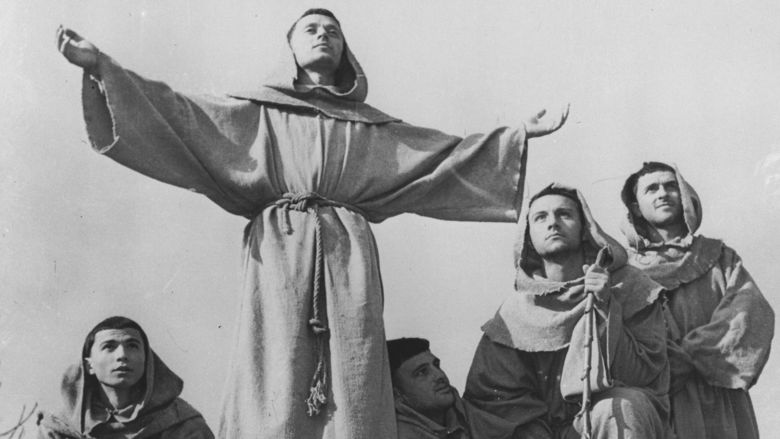
Included in the acting cast is Gianfranco Bellini as the narrator, who has voice-dubbed several American films for the Italian cinema. Monks from the Nocere Inferiore Monastery played the roles of St. Francis and the friars. Playing the role of St Francis is a Franciscan brother who is not credited, Brother Nazario Gerardi. The only professional actor in the film is the prominent Aldo Fabrizi, who had worked with Rossellini before, notably in the neorealistic film Rome, Open City. The film garnered international acclaim for Fabrizi. He began his film career scene in 1942, and is noted for both writing and directing his own vehicles. In this film, Fabrizi plays the role of Nicolaio, the tyrant of Viterbo.
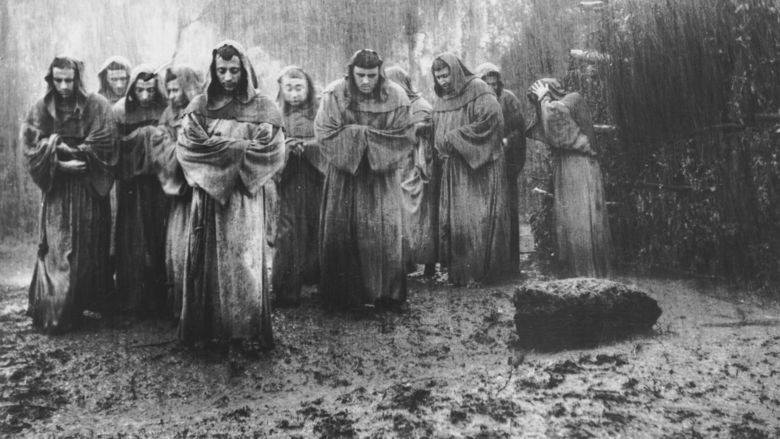
Rossellini had a strong interest in Christian values in the contemporary world. Though he was not a practicing Catholic, Rossellini loved the Church's ethical teaching, and was enchanted by religious sentiment—things which were neglected in the materialistic world. This interest helped to inspire the making of the film. He also employed two priests to work on it with him, Félix A. Morlion O.P., and Antonio Lisandri O.F.M. Though the priests contributed little to the script, their presence within the movie gave a feel of respectability in regards to theology. Morlion vigorously defended Catholic foundations within Italian neorealism, and felt that Rossellini's work, and eventually scriptwriter Fellini's, best captured this foundation.
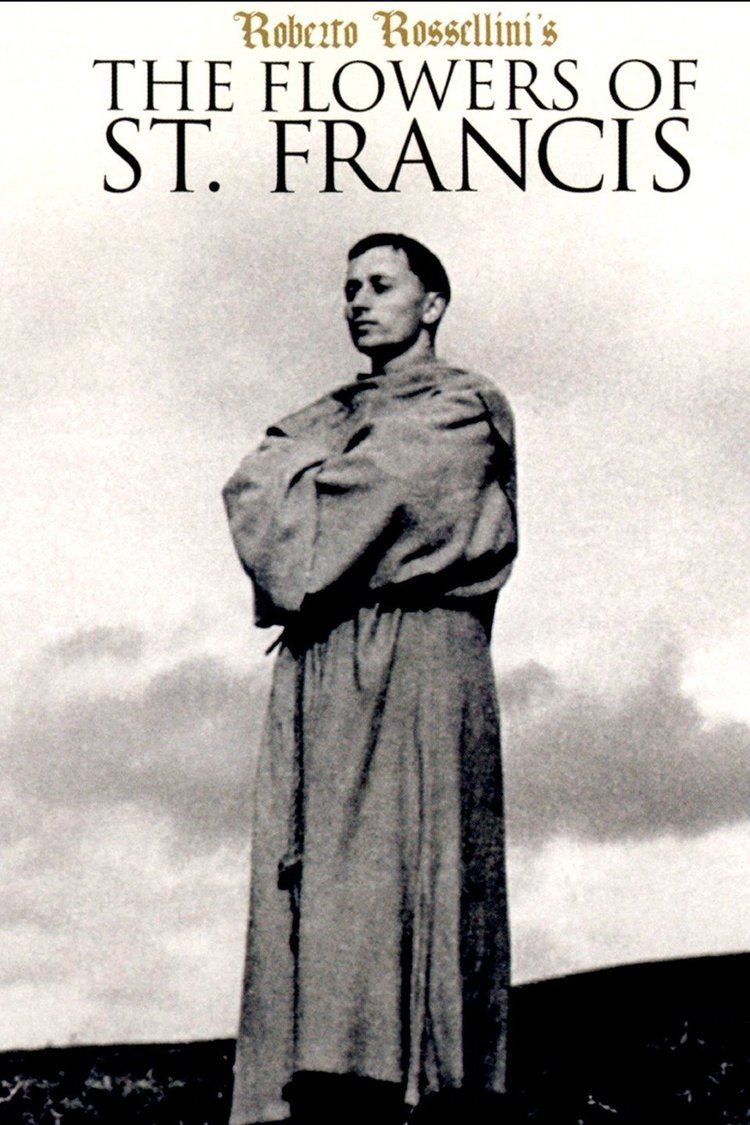
The flowers of st francis roberto rossellini 1950
Chapters
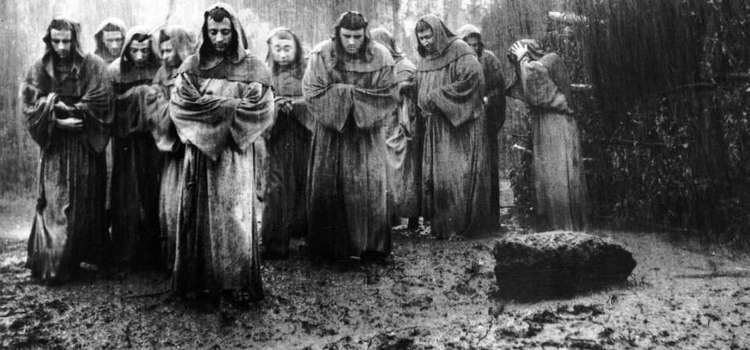
The movie commences with an introduction to the Franciscan friars. This first part serves as a precursor to the main chapters, nothing more than an introduction of the humble Franciscans as they trudge through the mud in the pouring rain to their hut. They reach the shelter, only to find it occupied by a man and a donkey. Despite the Franciscans' best efforts, the old man insists the donkey remain with him in the shelter. He drives the Franciscans from their own hut, screaming that they have stolen the shelter. Thrust into the rain without shelter, the monks rejoice in their suffering, loving their vocation even more and discerning this to be the call that they are to follow Francis.
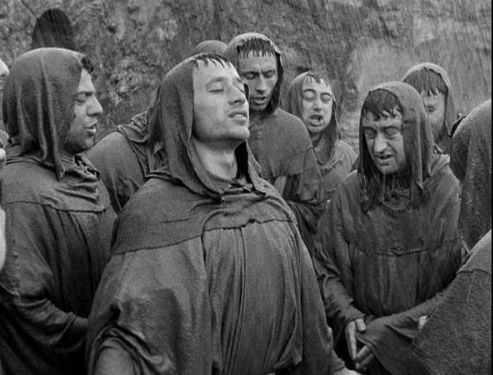
The rest of the film is divided into nine chapters each covering an incident in the life of St. Francis subsequent to his vocation.
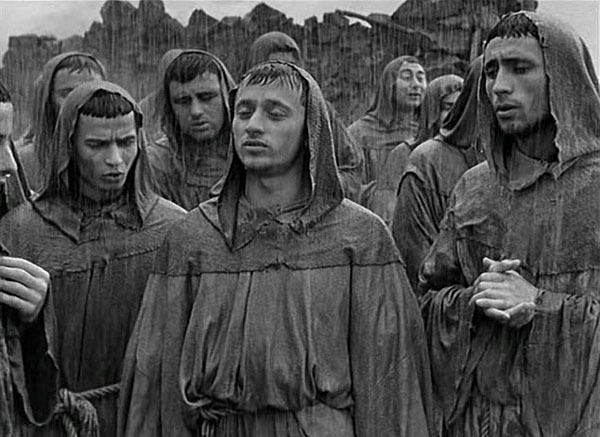
1 - How Brother Ginepro returned naked to St. Mary of the Angels, where the Brothers had finished building their hut.
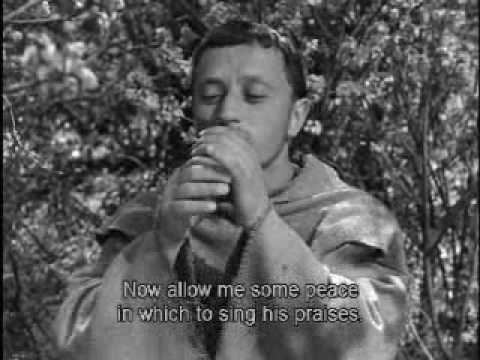
The first chapter is introduced by a parable and a chapter marker. It opens with the friars constructing a new hut. Two brothers return with a set of prayer bells, a gift from a generous donor. In the midst of their celebration, Brother Ginepro is found in the bushes without his tunic; he has given it away to a man in need. Francis instructs him never again to give away his meager garment without permission.
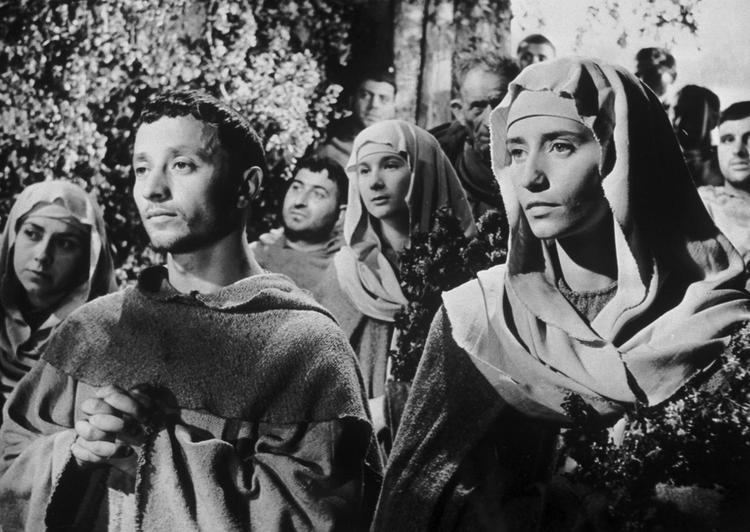
2 - How Giovanni, known as “the Simpleton”, asked to follow Francis and began imitating him in word and gesture.
The friars are running to meet Francis in the woods. They are leaving—though before they go, Francis prays for these his children, wishing them to spread the Gospel by their example. Brother Ginepro is ordered to stay behind and cook for the friars. While the brothers attend to their tasks, Francis utters his famous prayer, "O! Signore, fa di me uno strumento della tua Pace," in English, "Lord, make me an instrument of Thy peace."
Shortly after the prayer, an old man approaches the friar, bringing with him a gift of a bull. He wishes to abandon all for the sake of joining Francis, who questions him about his intentions. The old man simply states that he is willing to forsake everything to become a fellow Franciscan. Meanwhile, the man's family angrily arrives to reclaim the bull, and dismissively leave the burdensome elder behind with to St Francis, who then introduces the friars to their newest brother, Brother Giovanni.
3 - Of the wonderful meeting between St. Clare and St. Francis at St. Mary of the Angels.
Saint Clare has expressed an ardent desire to dine with St Francis. He accepts, and the brothers begin to search the forest for flowers so that they may honor this maiden of God. They find enough that they are able to construct a carpet of flowers. Francis and his brothers prepare a table of stone, and also garnish it with wildflowers. With the tools they have, they brush their hair, and trim their beards.
A few moments later, Clare arrives with three of her sisters. Together, they and the friars enter the Chapel where Clare first professed her vows. They pray, and then they eat. The holiness of their conversation, as the narrator explains, ignites the sky with fire.
4 - How Brother Ginepro cut off a pig’s foot to give to a sick brother.
Brother Ginepro is once again left behind while the other brothers are preaching and giving food to the poor. He and Brother Giovanni are tending to Brother Amarsebello, who has made himself sick from too much fasting. Ginepro makes Amarsebello a broth. Its taste is appalling, and so Ginepro asks Amarsebello what food would bring him comfort. Amarsebello asks for a pig's foot, and eager Ginepro consents to completing the task.
Ginepro searches the forest, praying to God to bring him a pig for his sick Brother. Ginepro soon stumbles upon some swine, and he asks one of the pigs to give up his foot. The pig squeals. Brother Ginepro removes the foot and gives it to his sick brother.
The brothers return from their excursion, only to be confronted by the owner of the pig. He demands recompense; Francis makes Ginepro apologize. The owner does not accept his apology, but instead leaves in silence. Moments later, the pig's owner returns with the pig draped over his shoulders. He gives it to the friars, but warns them never to touch his swine again.
5 - How Francis, praying one night in the woods, met the leper.
Francis is lying alone in the woods, meditating on the passion and love of God. The sound of bells captures his attention, and he is compelled to find the source. In the distance, Francis spots a lone traveler. Upon closer examination, he recognizes the traveler to be a leper. He devotedly follows the leper, and, despite the leper's pushing him away, persists in kissing and adoring the diseased man. Filled with awe, Francis collapses on the ground, praising God for the encounter with the leper.
6 - How Brother Ginepro cooked enough food for two weeks, and Francis moved by his zeal gave him permission to preach.
Tired of not being able to join the brothers when they preach, Brother Ginepro decides to cook all of the food that the Franciscans have accumulated into a broth. The broth will last for two weeks, thus granting Ginepro the freedom to preach instead of cooking supper for the brothers. Francis then grants Ginepro permission to preach, on the condition that he begin each sermon with these words, "I talk and talk yet I accomplish little."
7 - How Brother Ginepro was judged on the gallows, and how his humility vanquished the ferocity of the tyrant Nicalaio.
This chapter focuses exclusively on Brother Ginepro as he travels around Italy, trying to find someone who will listen to his preaching. He stumbles upon some children, who inform him that the tyrant Nicolaio has just occupied a neighboring town. Excited by the new opportunity, Brother Ginepro rushes to the village and attempts to preach. The barbarians are amused by the small friar, and so they play with him. They throw him, and use him as a jump rope for their own amusement. It is here that Ginepro has an epiphany, that one must preach not by words, but by example..
Brother Ginepro is brought before the tyrant. The barbarians search him, and discover an awl and flint. Nicolaio orders the barbarians to beat Ginepro with clubs. They bind his hands with rope and tie him to a horse. Once he is properly beaten, they bring Ginepro to the block for his execution. In mercy, they allow him to see a priest, who immediately recognizes him as a follower of St Francis. The priest pleads with Nicolaio to spare Ginepro. Nicolaio is reluctant to do this, for he was told that a man dressed as a beggar would come to kill him, and the assassin would be recognized by the very tools Ginepro possesses.
Nicolaio hosts a private audience with Ginepro in order to try to get to the truth of the matter. He is ultimately foiled by Ginepro's humility.
8 - How Brother Francis and Brother Leon experienced those things that are perfect happiness.
Perhaps the most famous chapter in I Fioretti, this parable explains how one can truly be happy. St Francis posits many scenarios that would be considered to bring happiness: restoring sight to the blind, healing the crippled, casting out demons, converting heretics, and the like. But after each scenario, Francis calmly explains that none of these acts would bring perfect happiness.
Exasperated by the scenarios, Brother Leone begs Francis finally to tell him what in truth will bring such happiness. Francis points to a building, and hopes that the Lord will show them the perfect bliss Francis has in mind. They knock on the door, and ask the man inside for alms. He refuses them, yet the friars persist, claiming that they wish to praise Jesus with him. The man returns their pleas with several beatings from a club. Once the man has finished, Francis turns to Brother Leone and explains that this is perfect happiness: to suffer and bear every evil deed out of love for Christ.
9 - How St. Francis left St. Mary of the Angels with his friars and traveled the world preaching peace.
Now it is time for the brothers to part, each called to go his own way to spread the message of the Gospel. The friars give away their farm to the townsfolk. They walk to a nearby town, and give to the citizens all of their food. Once the food is gone, the friars take a moment to pray together one last time.
Francis leads the friars into the woods. The friars are unsure which direction to go, so Francis instructs them to spin in circles until they fall over from dizziness. Whichever direction they face when they fall is the way which God desires them to preach. The Franciscans depart, singing a chant as they travel the world preaching the peace of Christ.
Cast
Production
Rossellini had been working on a film about St. Francis for years and he later called this film his favorite of his own works. Rossellini and Federico Fellini wrote a treatment of the film that was 28 pages long and contained only 71 lines of dialogue. It was partially inspired by such St. Francis legends as the Fioretti and Life of Brother Ginepro. Rossellini said that it was not intended to be a bio-pic, but would focus on one specific aspect of st. Francis's personality: his whimsy. Rossellini described this aspect of St. Francis as "The Jester of God." The film was a series of episodes from St. Francis's life and contained no plot or character development. Rossellini received funding from Angelo Rizzoli and from the Vatican to make the film. He cast the same Franciscan monks who had appeared in his earlier film Paisà. All of the other actors were also non-professionals, except for Aldo Fabrizi.
Filming began on January 17, 1950 in the Italian countryside between Rome and Bracciano. Fellini was not present during the shooting and Rossellini depended on help with the films dialogue from Brunello Rondi and Father Alberto Maisano. During the shooting Rossellini's and Ingrid Bergman's son Renato was born on February 2, 1950, although he was not officially divorced until February 9. The film extras brought riccota to the newborn baby during the production.
Release and reception
The film premiered at the 1950 Venice Film Festival, where it was screened before a packed audience and often applauded in the middle of certain scenes. However, critics gave the film mostly poor reviews. Guido Aristarco said that it displayed a formalist and false reality. Pierre Laprohon said that "its most obvious fault is its lack of realism." Years after its release, Marcel Oms called it a "monument of stupidity." However, New York Times film critic Bosley Crowther praised it. On its initial release, the movie earned less than $13,000 in Italy.
Pier Paolo Pasolini said that it was "among the most beautiful in Italian cinema" and Andrew Sarris ranked it eighth on his ten-best film list. François Truffaut called it "the most beautiful film in the world."
Although somewhat poorly received at the time, the film is now recognized as a classic of world cinema. It has been released on DVD by The Criterion Collection and Masters of Cinema.
In 1995 the Vatican listed the film as one of the forty-five greatest films ever made.
References
The Flowers of St. Francis WikipediaThe Flowers of St. Francis IMDbThe Flowers of St. Francis Rotten TomatoesThe Flowers of St Francis themoviedb.org
